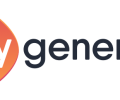This first principle might be the easiest and most difficult of all 22 principles. Before planning or developing any training or learning solution, you must first ask yourself – what is the issue and what do we have to fix? If learning or training is able to fix the issue then that’s the right solution, but it isn’t always. That’s because learning is not the goal, performance improvement is. So only when learning is the best way to reach that goal, should it be considered.
How to: “not assume that learning is the solution”
Here are a few examples to consider: I worked in the online help industry (EPSS) for many years. What I found however, was that I was creating fixes for bad software when I thought the solution was ‘better software’ instead of more online help. There is a similar problem with learning.
Michael Allen sent me the following similar example: “Years ago I worked on a major project with American Airlines. Their flight reservation system used the most ridiculous, arcane interface. Instead of all the thousands and thousands of training hours necessary for agents to be able to use the system, I thought they could spend far less by just redesigning the system they were all learning to combat. It would have saved them so much not only in training costs but also in all the errors that had to be rectified and in the time necessary to process each transaction. Easy concept. Hard to make happen.”
When there is something wrong with the organization or product: learning is not the solution; improving the organization or product is. So, when your learning intervention is covering something that needs improvement, look at those improvements first and ask yourself if learning is the best solution or if it needs something else such as: performance support, coaching, a knowledge management system, social sharing, or an apprenticeship program – these are all possibilities if learning is not the answer.
How to convince your boss/client
The challenge of convincing someone to do something or to recognize what may seem obvious to you is always difficult. So, convincing your boss or client to adept the 22 principles of the manifesto may be the most difficult part of it. Additionally, learning departments are often staff organizations that are not included on the front-end of decisions like this. Usually, something trickles down from the business or C-level in the form of an assignment. There is no room for discussion whether or not learning is the solution or even to have clarity on which business problem needs to be solved.
If we lived in an ideal world, learning would be integrated in the business, working side-by-side with other colleagues to solve business problems and improve performance. But most of us don’t live in an ideal world. That’s why those of us who are in learning departments need to make suggestions and ask questions about how learning can work side-by-side with the business. Such suggestions could result in a culture shift, where the organization begins to recognize the value of learning and makes changes to integrate learning into daily business decisions.
Don’t wait until the organization changes you: change the organization
If you are not in a position to make or influence these kinds of business decisions, show your boss and management that you should be. Sit down with your team and invite others from the business to review business goals and identify ways to reach them. The objective is improved staff performance in order to meet company goals. You understand this and know the steps and process to reach it. Here is an example from easygenerator.
Easygenerator recently launched a new web-based application. Many individuals checked out the tool and started to build a course. However, many of these new users don’t end up where they should — with a published course. So easygenerator established a clear business goal — at least 75% of all new easygenerator users who sign up for the tool should publish at least one course in the first two weeks of sign up. To define what to do, we use a method called “impact mapping”. You define a goal and focus on a specific type of person – in this case – “A New User”. With this identification you determine the activities they need to do, and create improvements and measures to support this goal. I created a mind map of this impact map:
As you can see, this map outlines potential reasons or roadblocks as to why a new user may start to build a course but not complete it. As a result of this mapping, easygenerator identified what improvements need to be made to support new users. What’s most interesting is that we have a few user performance solutions (add tips, add examples) and two learning interventions (add an introduction video, add a course on writing learning objectives) but the other improvements aren’t around learning needs (I count performance support as learning).
This exercise demonstrates the value in brainstorming with a broader perspective. It will help you to see other improvements that may be more effective than learning. If you present similar outcomes to your management, they will (or should) be interested to listen to your ideas. This will give you an opportunity to make changes and integrate learning into the business. If they’re not interested, try again, if that don’t work try to replace the C-level or start looking for a new job.
When you are working for external clients, you can follow the same approach. Sit down and talk about the business goals they want to achieve and show them the value of learning in reaching those goals, putting learning in a broader perspective. You may end up developing fewer courses for them, but you may gain a role as a partner and a consultant.
So, one down and 21 to go! See the overview article for other published posts of this guide.





